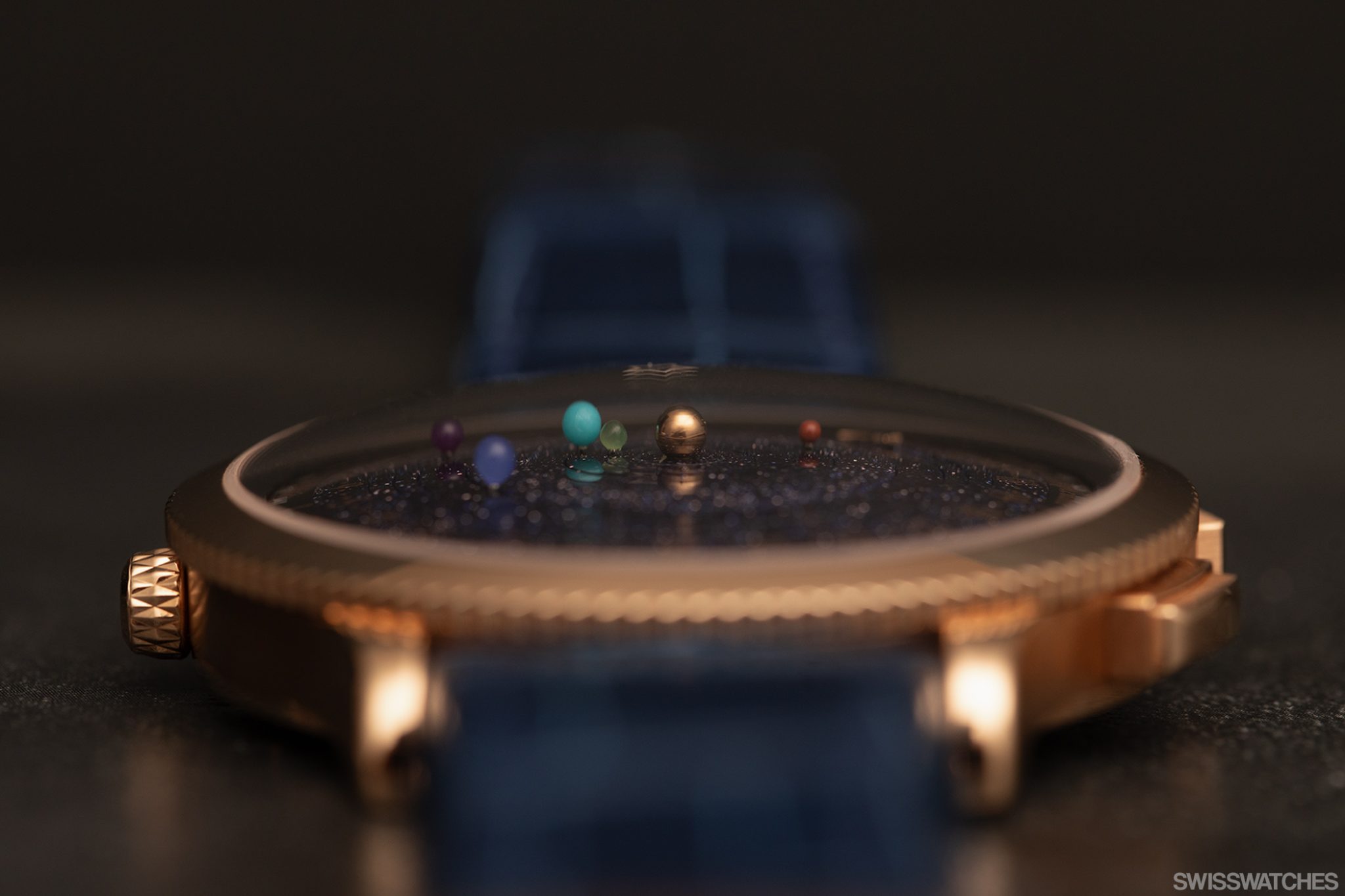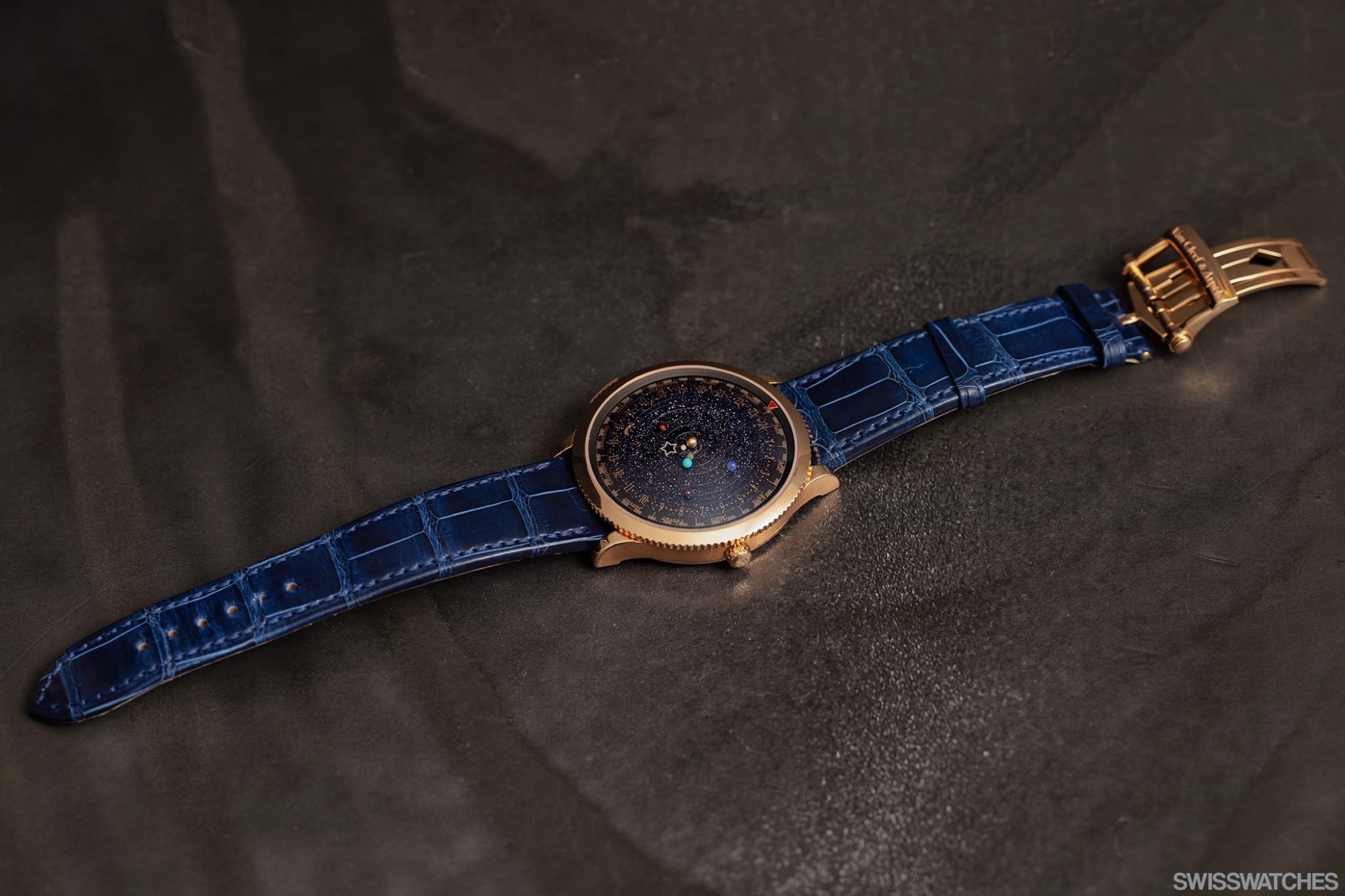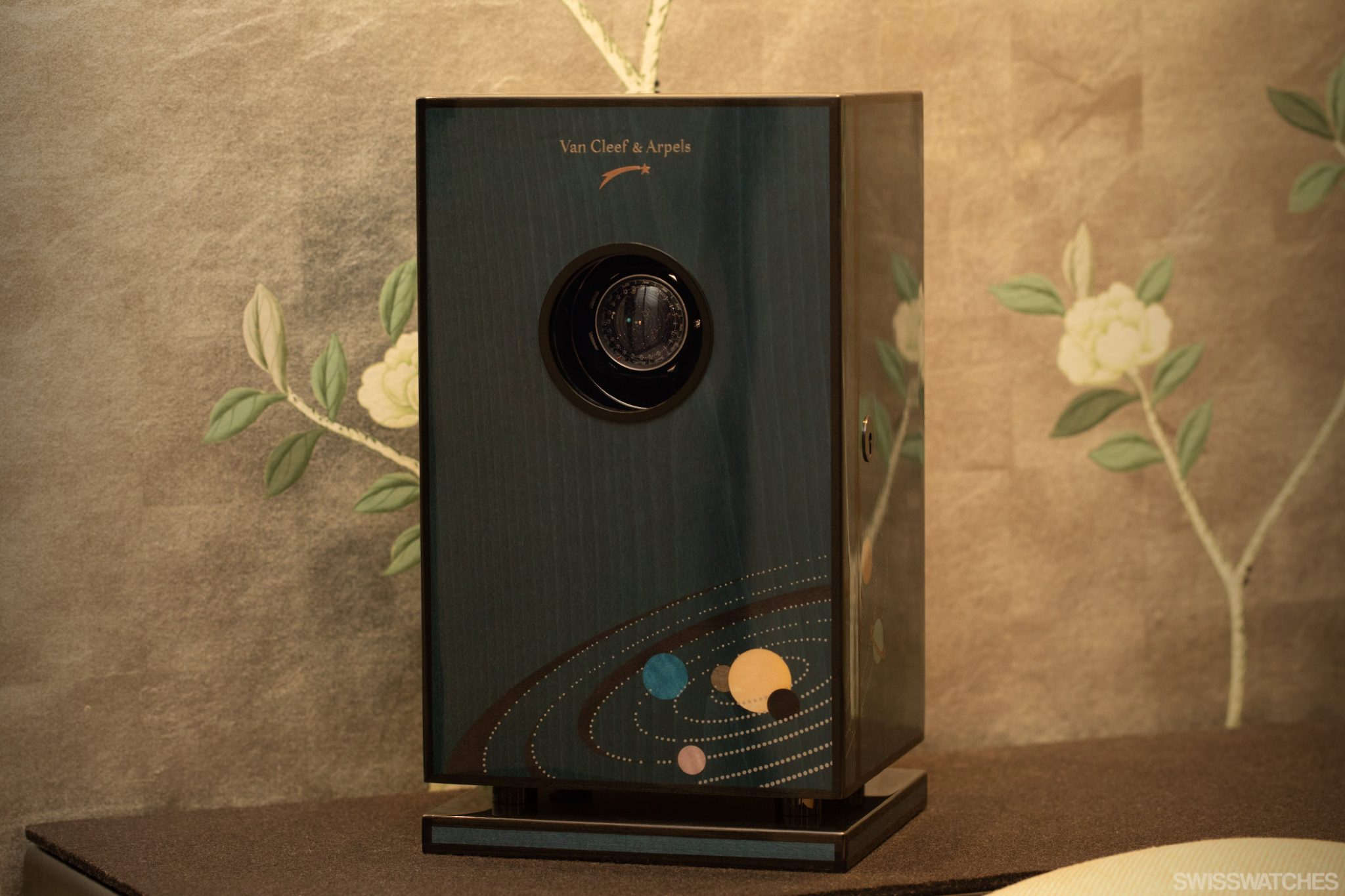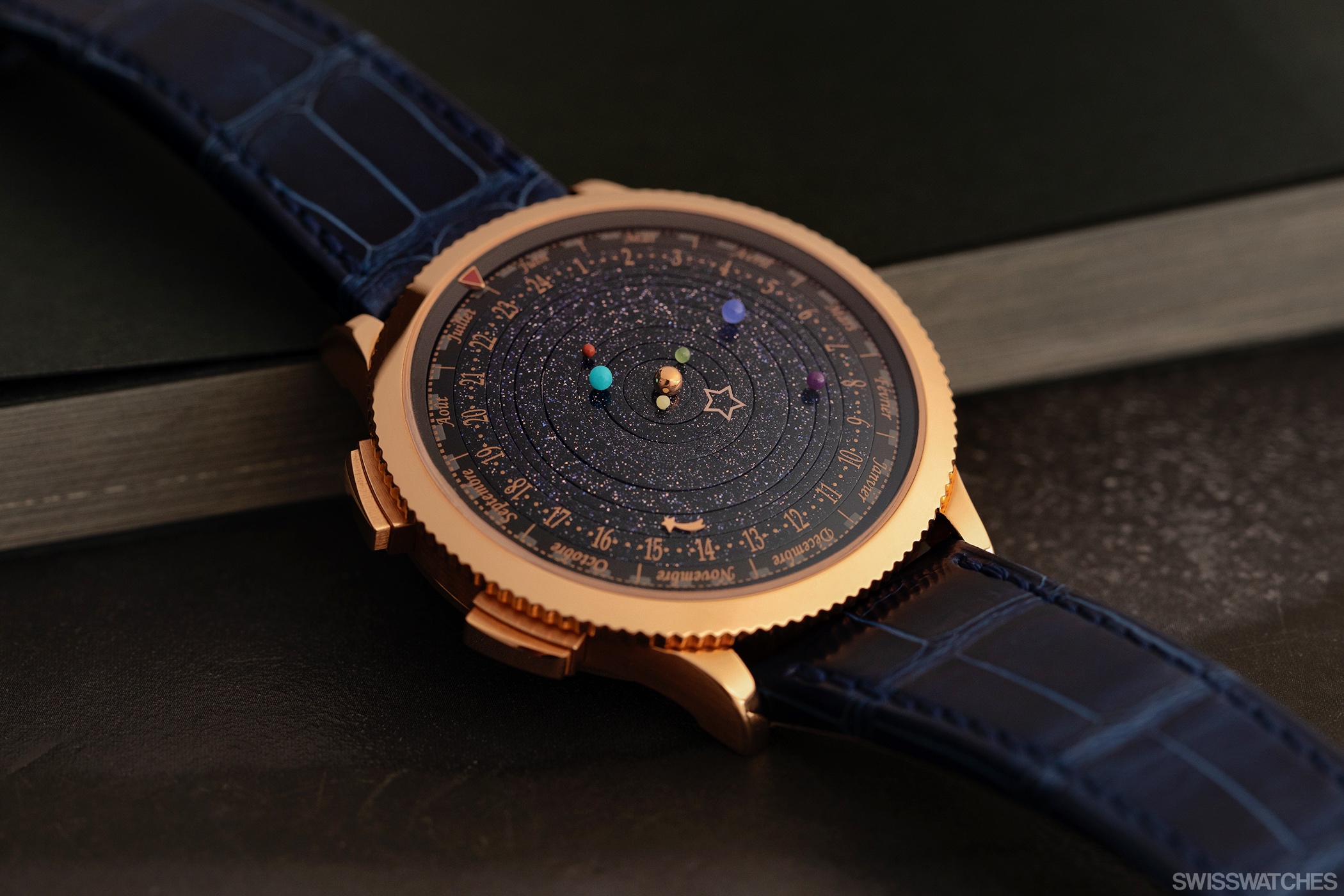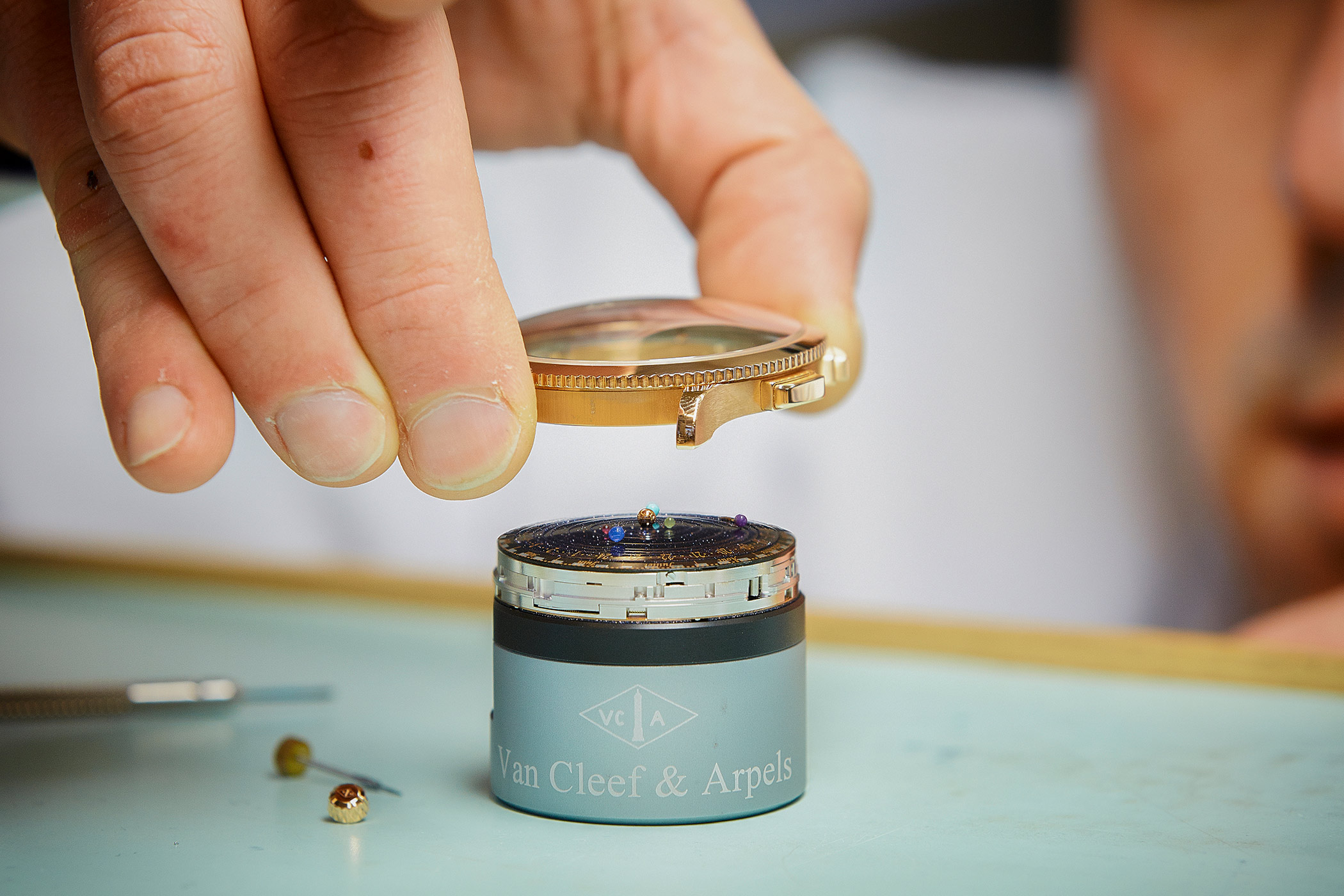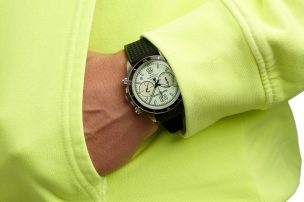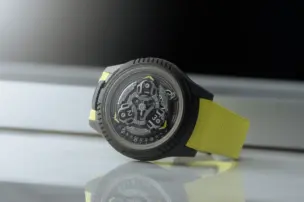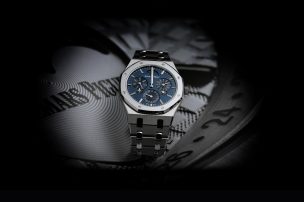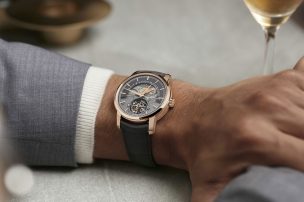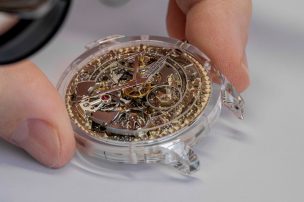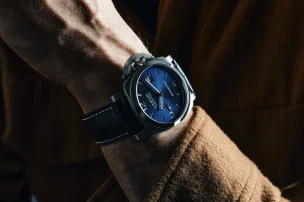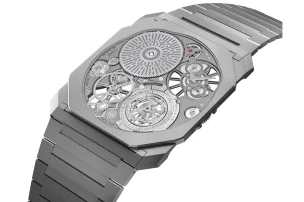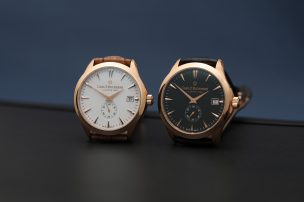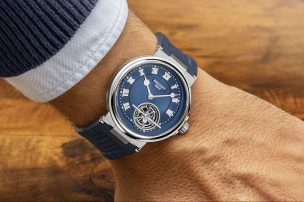
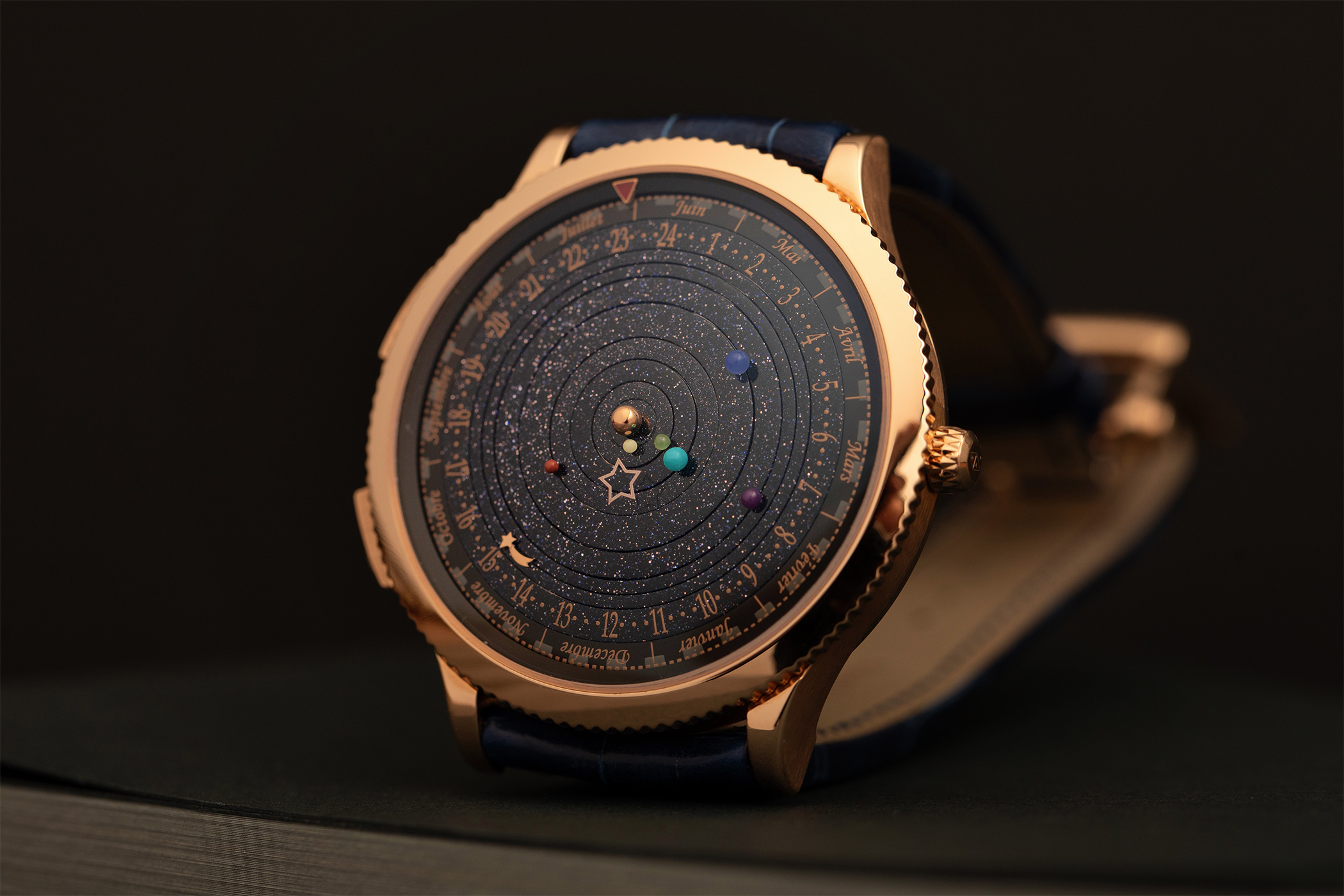
A Closer Look: The Van Cleef & Arpels Midnight Planétarium – A Universe on the Wrist
Even for those who think they have already discovered everything in the fascinating world of watches, here’s a truly astonishing piece. The Midnight Planétarium by Van Cleef & Arpels from 2014 is not only an extraordinary men’s watch, but also a true work of art on the wrist that marries the art of watchmaking and jewellery making. Its dial is home to the smallest planetarium in the world, offering a fascinating view of the Sun and six inner planets of our solar system: Mercury, Venus, Earth, Mars, Jupiter and Saturn. Each of these planets is represented by a gemstone, orbiting around the sun while corresponding to their actual orbital period in space. This is a watch that invites you to dream, while opening up a world of new perspectives. Immerse yourself in the fascinating mechanism of the Midnight Planétarium and the story of this horological feat became possible.
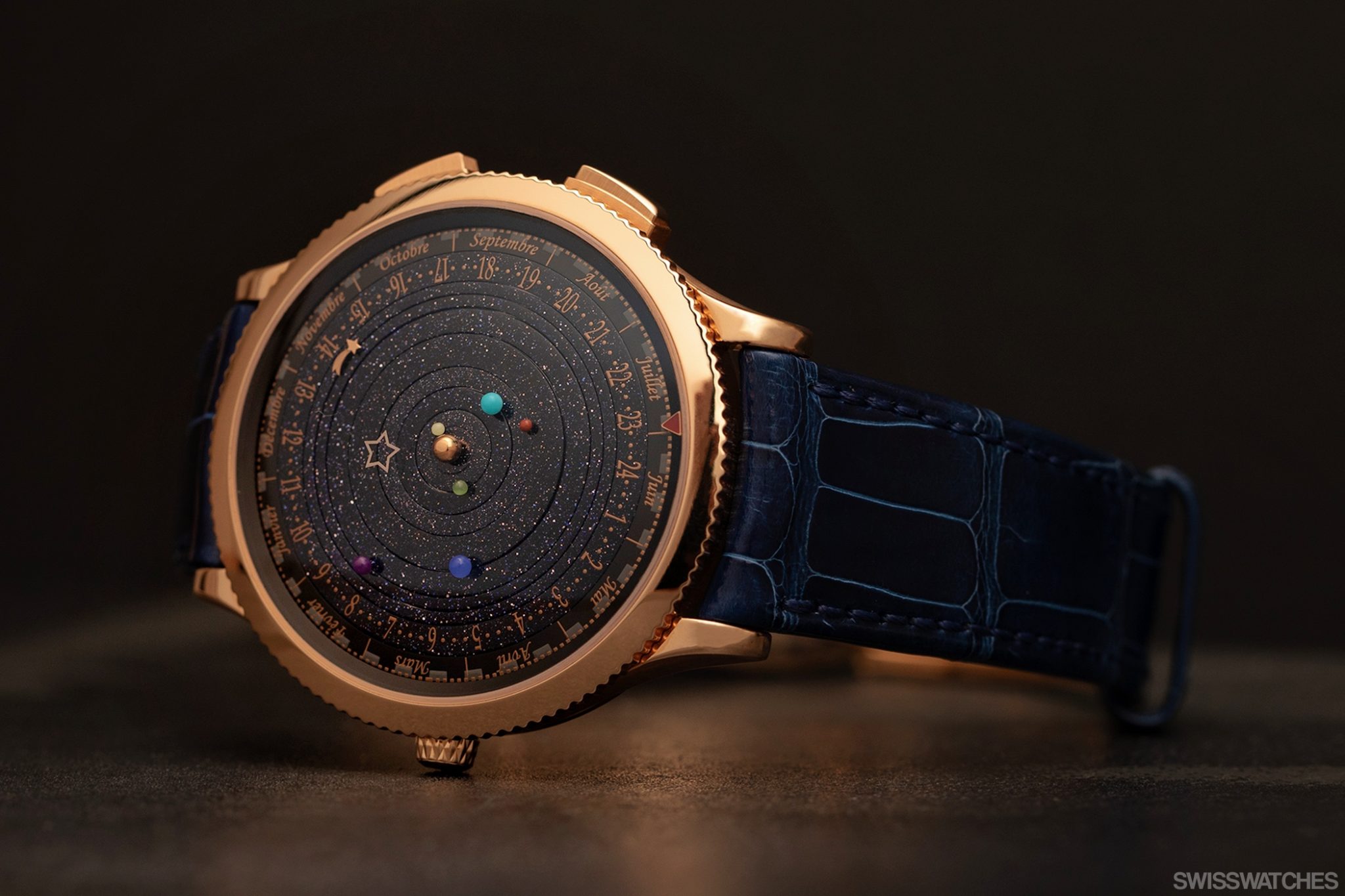
Depictions of the Earth throughout history
It is arguably the most iconic photograph of the 20th century: the Earth rising above the bleak horizon of the Moon, a small marble more than 370,000 kilometres away, containing all the life ever known to mankind. In 1968, the Apollo 8 mission sent images to Earth that were that were so spectacular they sent a metaphysical shiver down every human’s spine. For the first time in history, we took on the perspective of God and saw that Mother Earth was just a tiny little stage in a seemingly infinite cosmic arena. It almost reads like a comedy: a planet of lost individuals, somehow seeing ourselves as protagonists in this great solar system, yet floating in the infinite darkness.

Earthrise, shot during the flight of Apollo 8.
The truth is that cosmology already existed long before the natural sciences; people have long been trying to make sense of the world. At first, people tried to reason with our planet’s creation through fantastical or religious motives. Until about 500 BC, the idea of the world being flat was commonly spread throughout all cultures, from the Indians and the Chinese to the Germans and Babylonians. In the Indian tradition, the Earth was a disc, with a golden mountain, Mount Meru, hosting the gods in the middle. Seven oceans stretched out around it, filled with different of different liquids, namely salt water, sugar water, alcohol, butterfat, milk, yoghurt and fresh water. In other myths, the Earth’s disc was carried by an elephant named Mahapudma, who stood upon the turtle Chukwa. Germanic mythology presented a different approach, by which the earth was held up by a giant tree known as the Yggdrasil or World Ash. These beliefs were finally superseded by Nicolaus Copernicus, who, in 1543, put forth the heliocentric view of the world, in which the earth itself revolves around the sun.
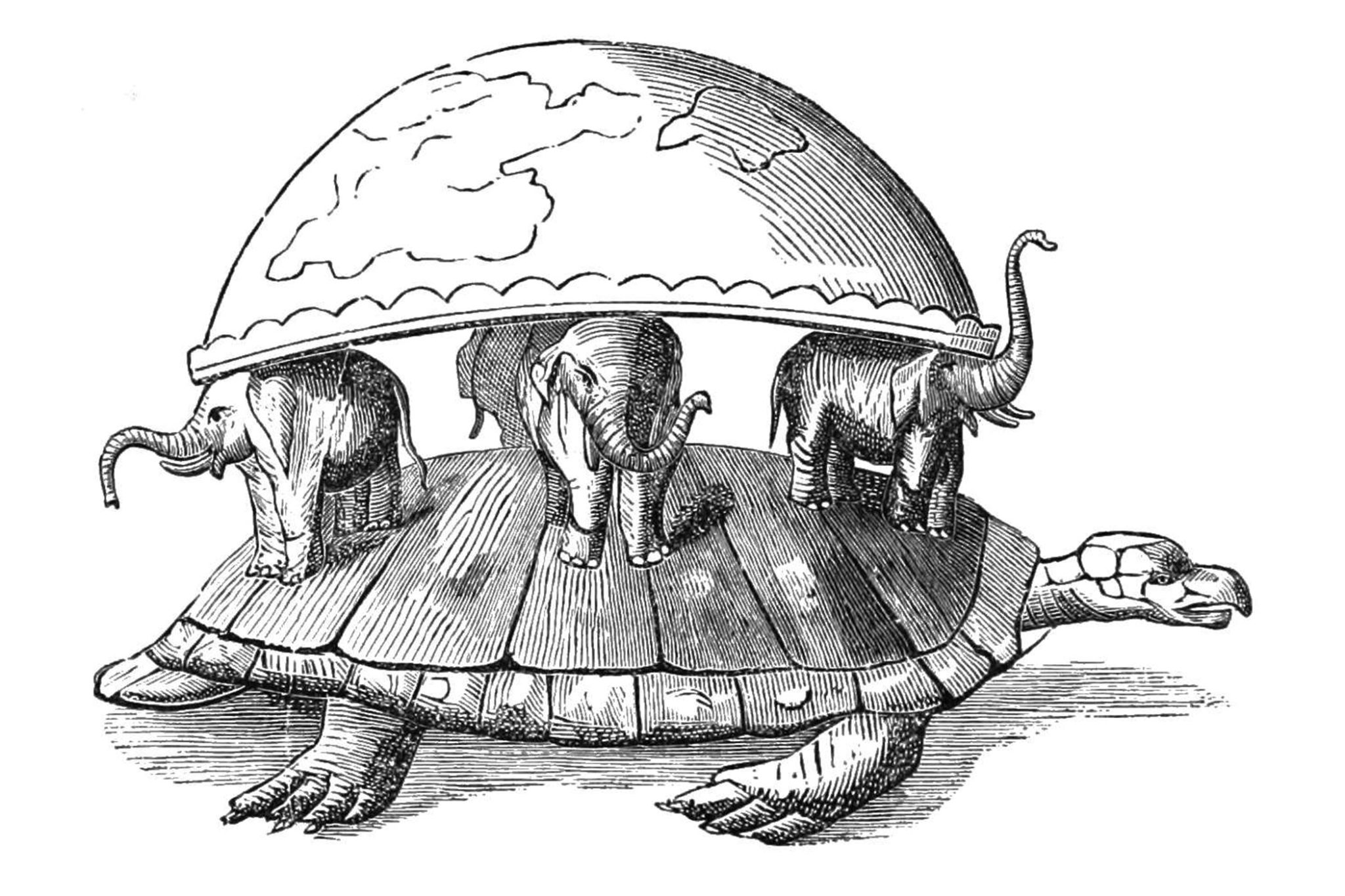
The story of the planetarium
Regardless of the world views that have occupied mankind throughout the ages, the actual visual representation of the universe and the sky has always fascinated people. The term ‘planetarium’ originates in antiquity, referring to models depicting the Sun, the Moon and the planets closest to the Earth. The oldest example of such is the Antikythera mechanism, dating back to the 2nd century BC, having been discovered in 1900 by sponge divers in a shipwreck off the island of Antikythera. This mechanism, which is also dubbed the oldest known example of an analogue computer, overturned the previous conception of the ancient world, with the ability to predict the position of the Sun and the planets for years to come, and was more complex than all the astronomical clocks known to us from the Middle Ages and early modern times. With a series of gears and miniaturised planets, it truly succeeded in reproducing the universe as a clockwork.
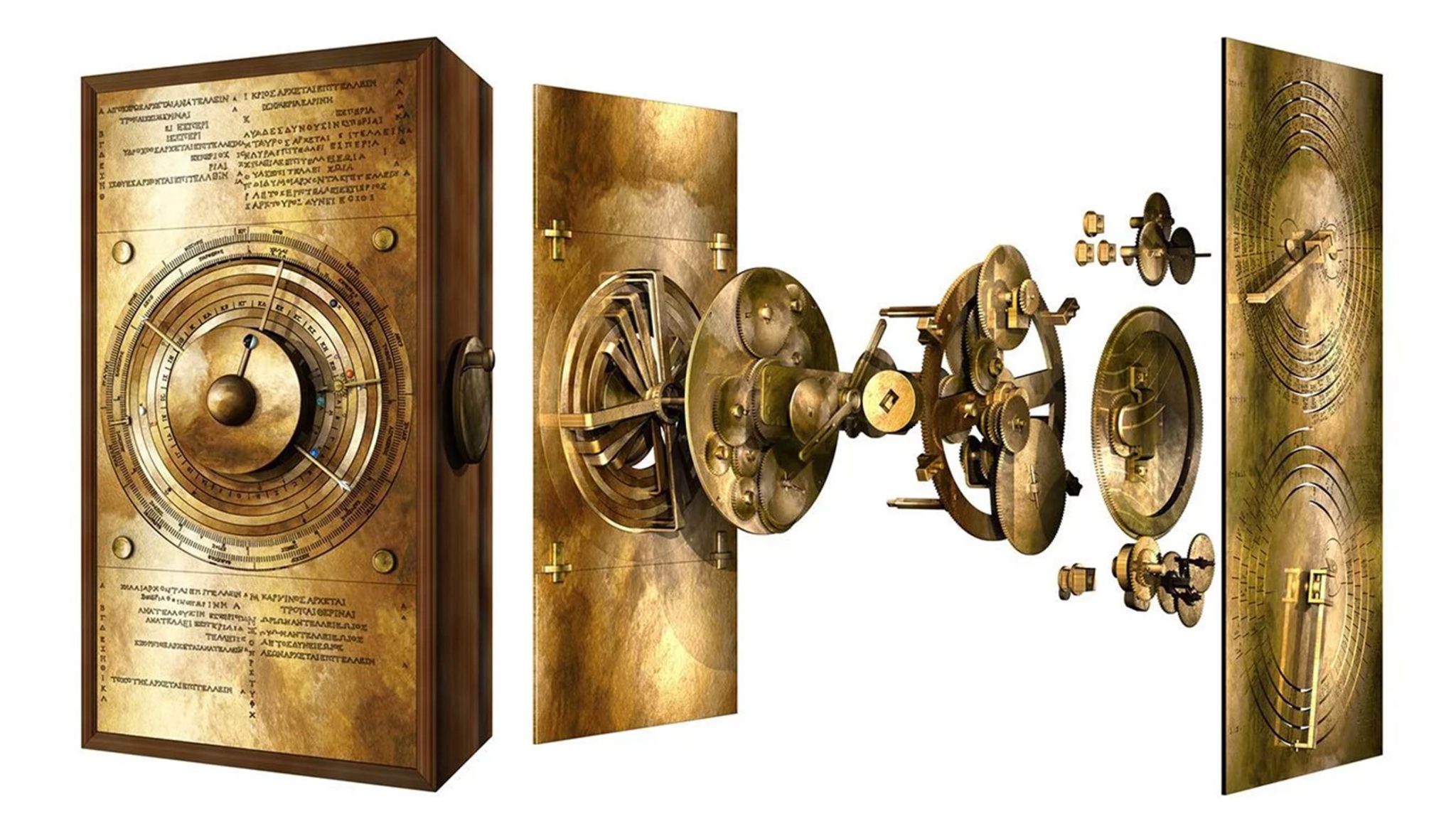
The mechanism of Antikythera
Over the course of time, these objects representing the cosmos were combined with instruments of great precision: sextants and armillary spheres. Astronomical and planetary advancements later made it possible to reproduce the movements of the planets around a fixed sun. The Galilean planetariums gradually replaced the Copernican models, while the planetarium of the astronomer Eise Eisinga – built in Waadhoeke, Holland in 1781 – is the latest example.
The Van Cleef & Arpels Midnight Planetarium
In 2014, Van Cleef & Arpels succeeded in bringing the dimensions of a planetarium to life with the launch of the Midnight Planétarium, which managed to adapt the dimensions of a planetarium to the scale of a wrist. With this timepiece, Van Cleef & Arpels pursues its ‘Poetic Complications’ concept, which namely aims to create an emotionally charged timepiece that has deeper motivations than mere functionality. Thanks to this watch, we can question whether the Enlightenment and the development of technological achievements disenchanted the story behind cosmos. Personally, I find the Midnight Planétarium proves just the opposite. With the watch allowing the wearer to read the exact position of the planets in our solar system, this infinite knowledge surely awakens something special in every observer.
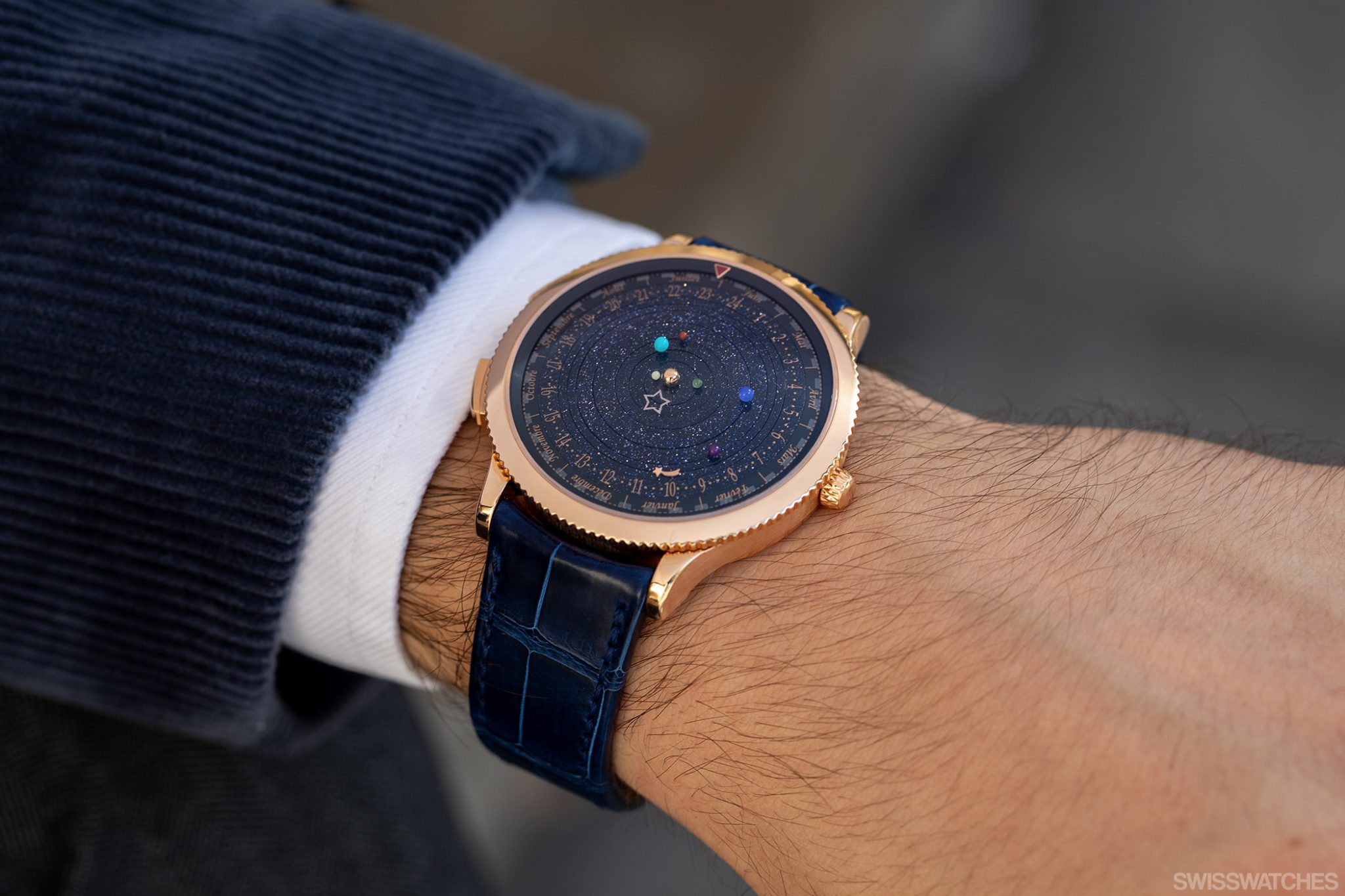
The planets and time in harmony
Although the dial offers a multitude of functions, it nevertheless maintains a certain elegance, thus fitting seamlessly into the Midnight collection. In fact, it is clear that the brand has used its expertise in jewellery-making to create the planets, which are made of hard stones, by hand. The surface of the dial is formed by individual aventurine rings, in which independent movements serve as the orbits of the planets. The individual composition of the aventurine creates a visual depth, reminiscent of a night sky speckled with stars.
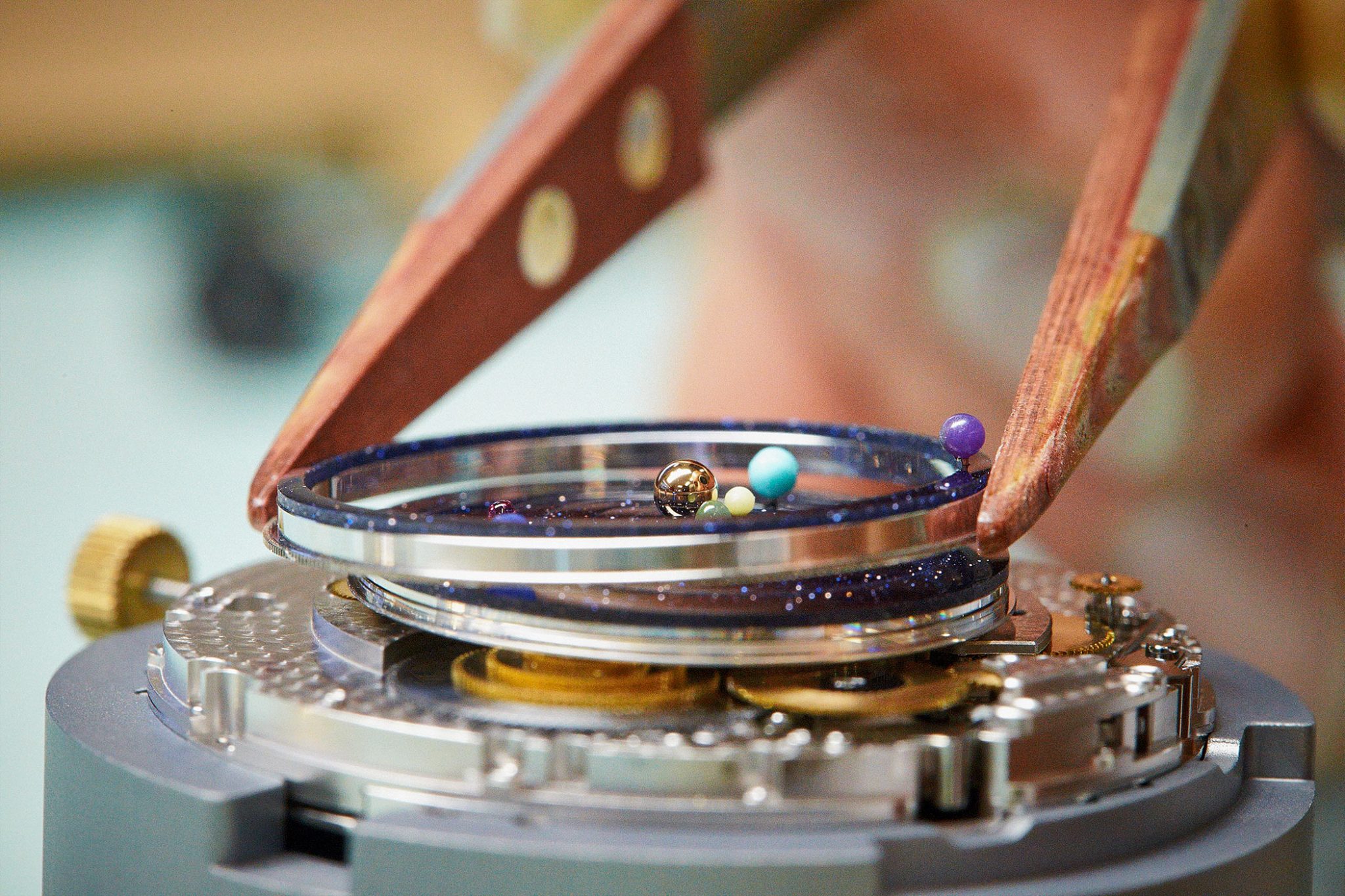
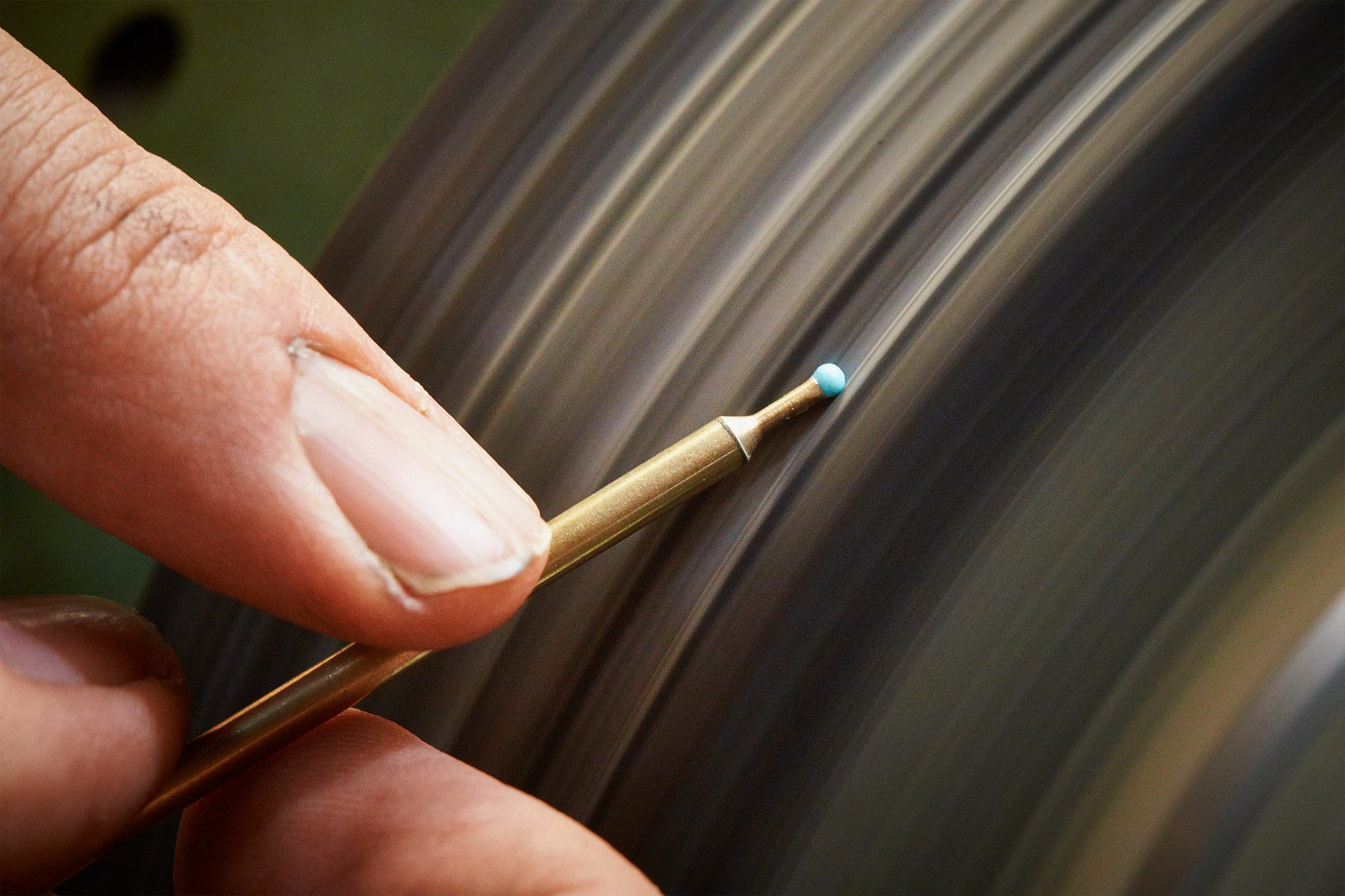
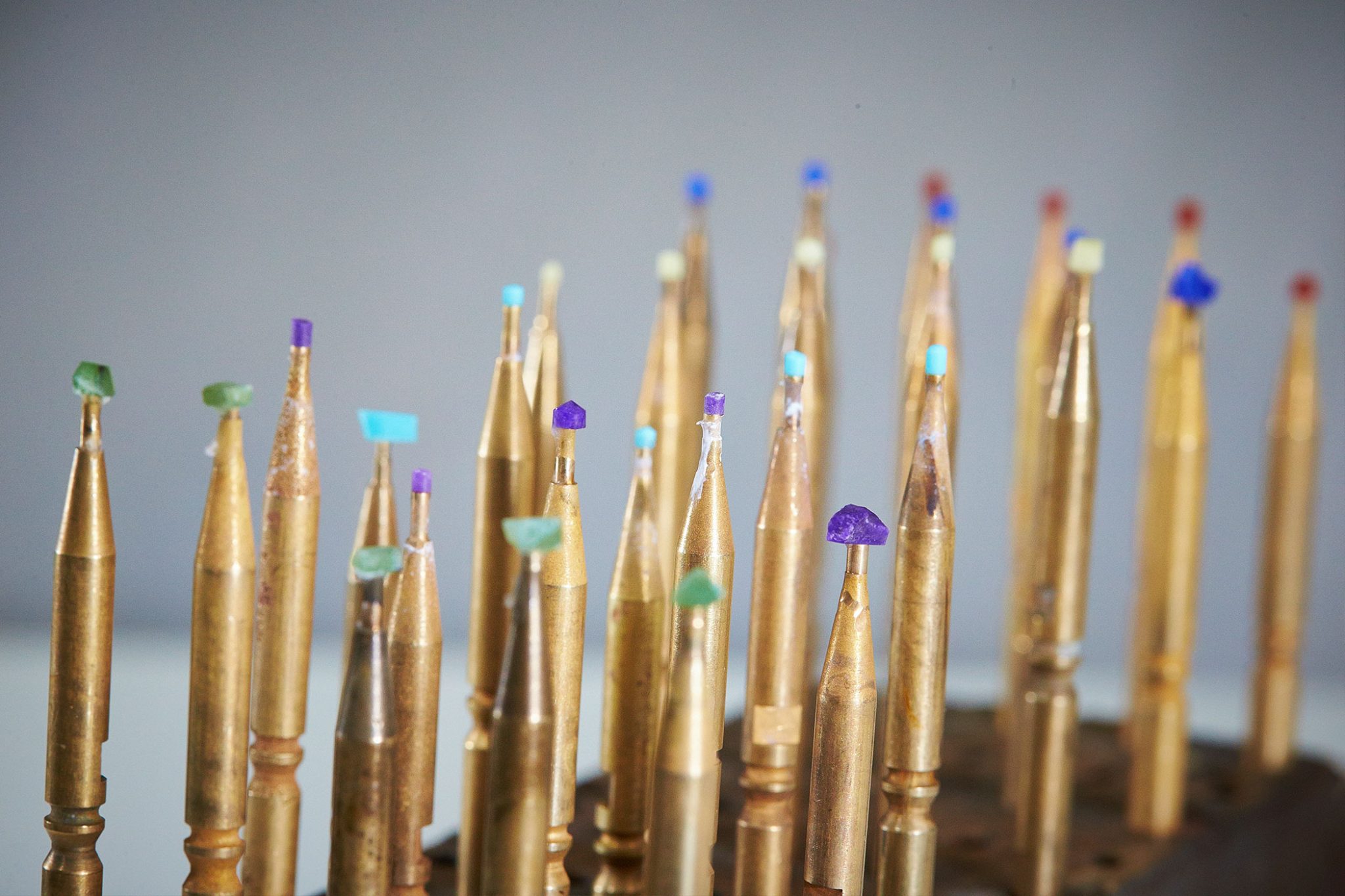
Each of the six gemstone planets takes its place on each of these rings, while the Sun – represented by a solid gold sphere – is in the centre. At this point, the Midnight Planétarium begins its ‘poetry’, as the planets move in real time. Saturn, for example, takes over 29 years to complete its long journey around the dial. To tell the time, you can watch the rose-gold shooting star that floats over the outer rim of the dial, completing its cycle over 24 hours.
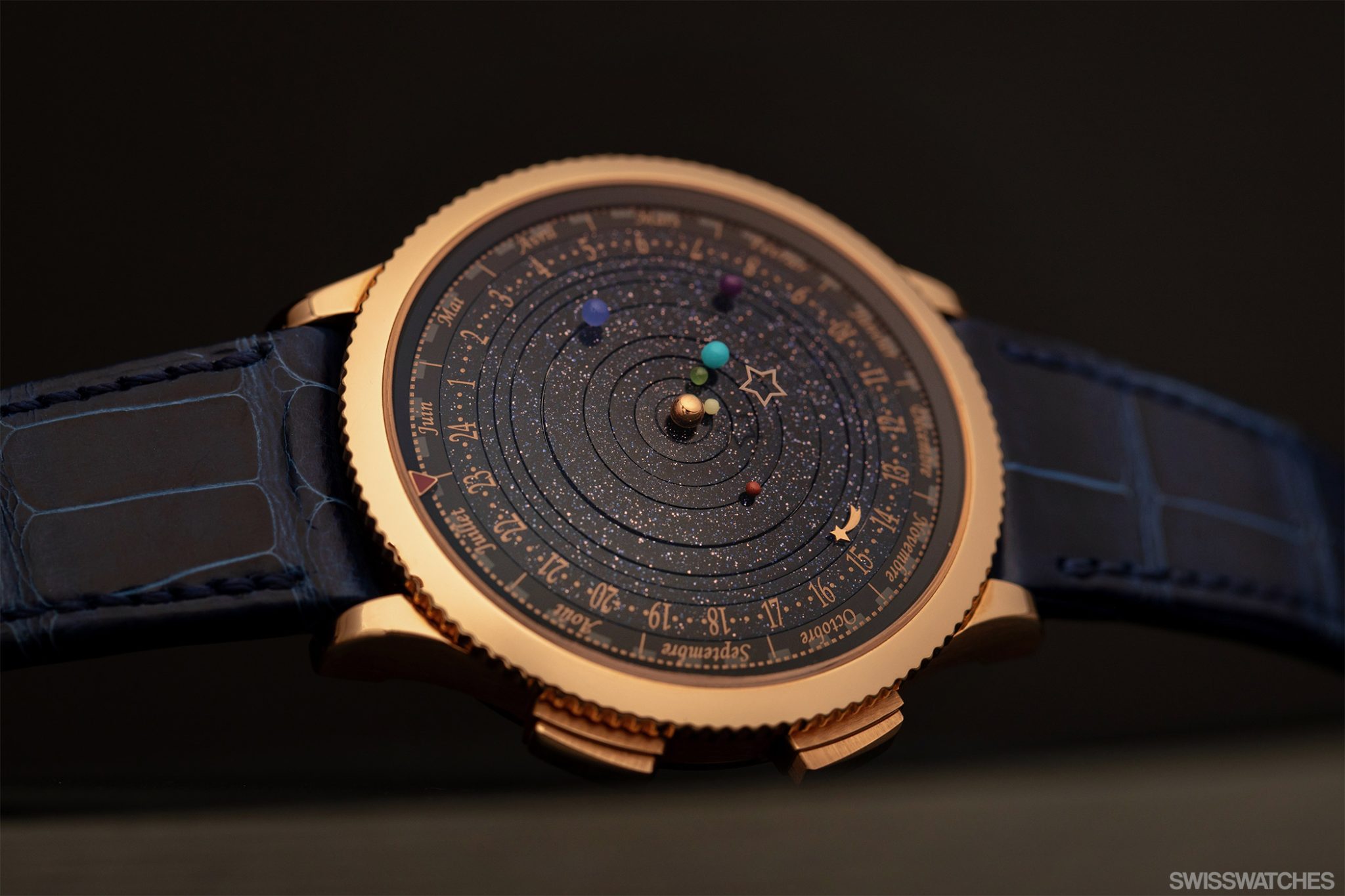
Above the dial, the rotating bezel ensures that the overall design of the watch matches to other timepieces in the Midnight collection, while adding a functional element. However, in true Van Cleef & Arpels style, it serves a ‘poetic’ rather than a ‘practical’ purpose, as it gives the wearer the opportunity to determine his/her lucky day and celebrate it every year. With the help of the bezel, the wearer can associate the red arrow with a special day on the peripheral calendar display that extends around the dial. On this day, the Earth will move directly under the star engraved on the sapphire crystal, thus marking the birth of one’s child, for example.
The story continues on the back, where two magnifiers above the windows display calendar data. By pressing on the side of the case, the wearer can set the day, date and year with relative ease. This mechanism also provides the wearer with the additional ability to view the exact position of the planets on a given date. This is impressive in two respects, because not only can the current position of the planets be visualised, but also future and past positions. Overall, every component of the Midnight Planétarium proves that the brand has integrated its design language into the traditional concept of the planetarium to lend it an individual charm.
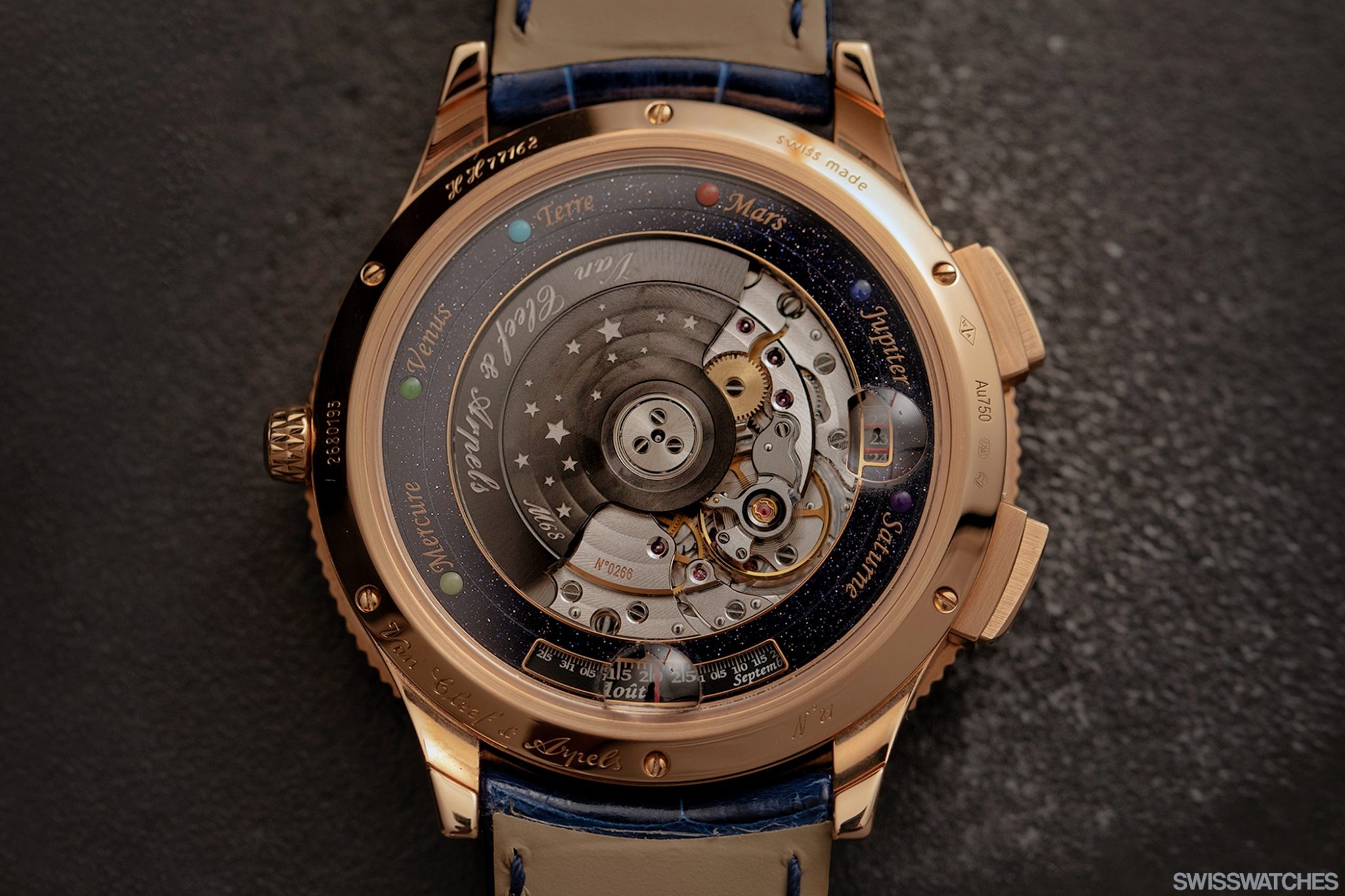
The movement
With the aim of designing a movement that would integrate the smallest planetarium mechanism in the world into the Midnight Planétarium, Van Cleef & Arpels consulted the Dutch watchmaker Christiaan Van der Klaauw. He presented a richly decorated watch with moonphase in 1974, which marked the beginning of his exploration of the niche field of astronomical complications. Van der Klaauw’s ambition to further develop his practices eventually resulted in his first wristwatch, which was released in 1996. This wristwatch, the Satellite du Monde, featured a moonphase plus day and night indicators, offering a hitherto unique display that informed the wearer which city was reaching noon at that precise moment.
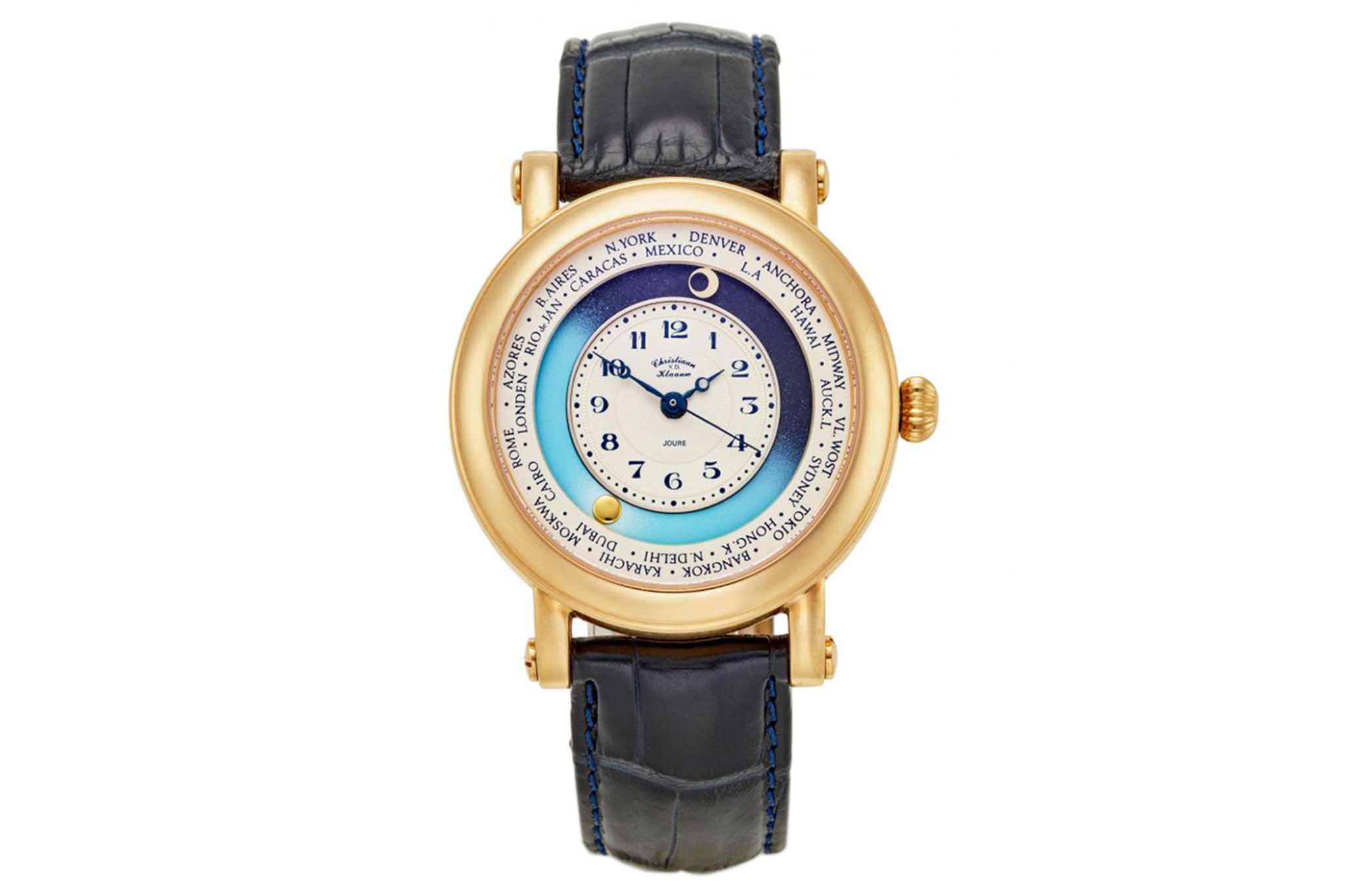
Christiaan van der Klaauw’s Satellite du Monde
Credit © Collectorsquare
In 1999, Van der Klaauw presented the CVDK Planetarium, home to with what was at the time the world’s smallest mechanical planetarium in the world. From then on, Van der Klaauw decided to focus to concentrate only on astronomical complications and to develop new modules that would consolidate his niche position in the world of astronomical timepeices – and with success, for as we know today, Christian van der Klaauw Astronomical Watches is the only atelier in the world that is entirely dedicated to the design and manufacture of handcrafted astronomical watches.
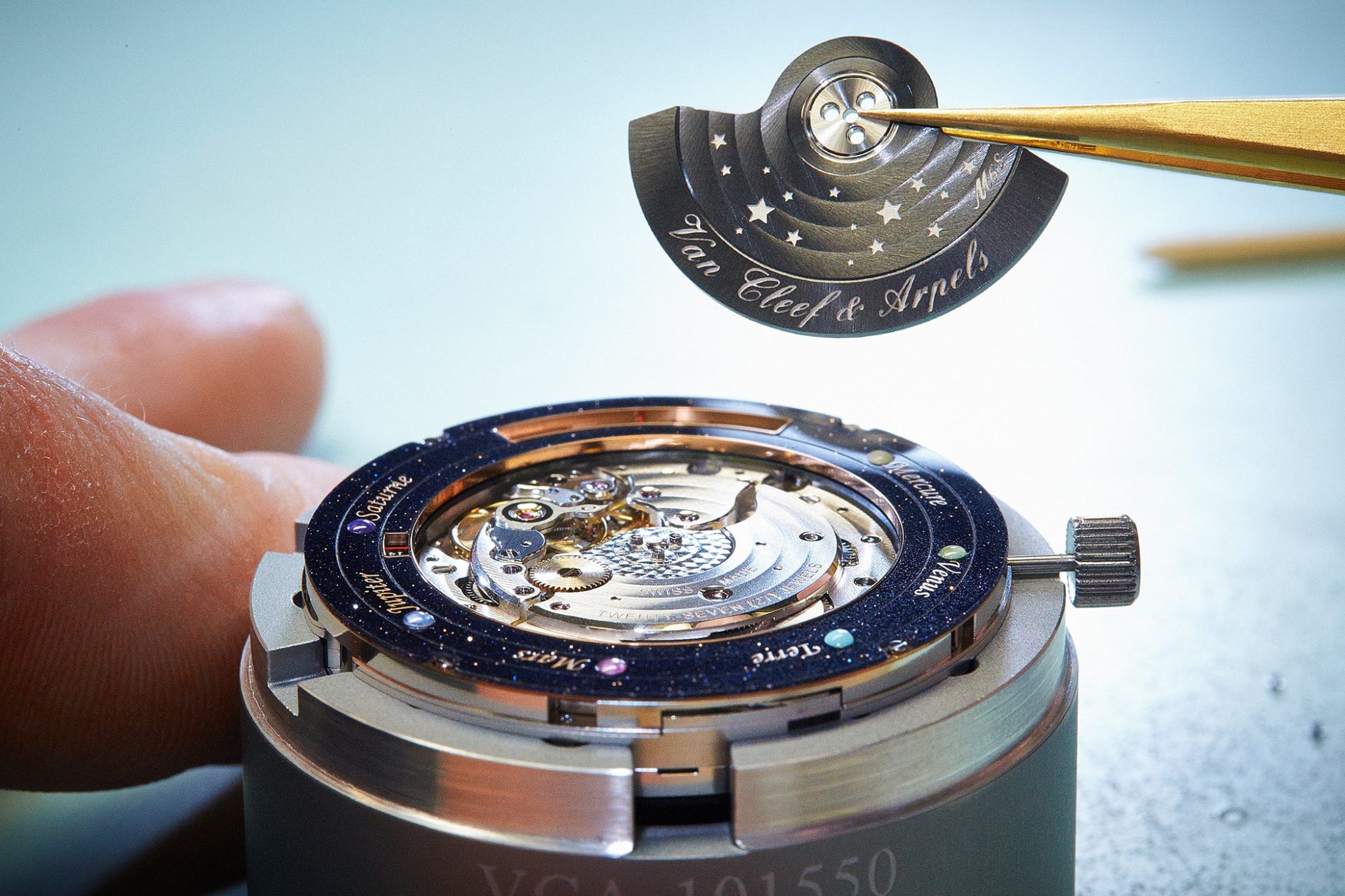
The verdict
The Midnight Planétarium is not only a technical masterpiece, but also a work of art. When I wore the watch during our visit to the Van Cleef & Arpels boutique in Munich, the brief glimpse of the aventurine dial instigated a change of perspective that confronted me with the fact that we are just one fragment in the midst of an infinite cosmos; at times, it makes our little problems on Earth seem trivial. In other words, this is perhaps the most accomplished watch with a poetic complication for men out there, not to mention one that combines jewellery making and watchmaking. On the wrist, the watch wears pretty large with a width of 44 mm – although this is not surprising given the complexity of the dial and its composition. Nevertheless, the watch, with a case that is brimming with French sophistication, is not exactly a statement piece, but neither is it restrained either – and this is what makes it versatile.
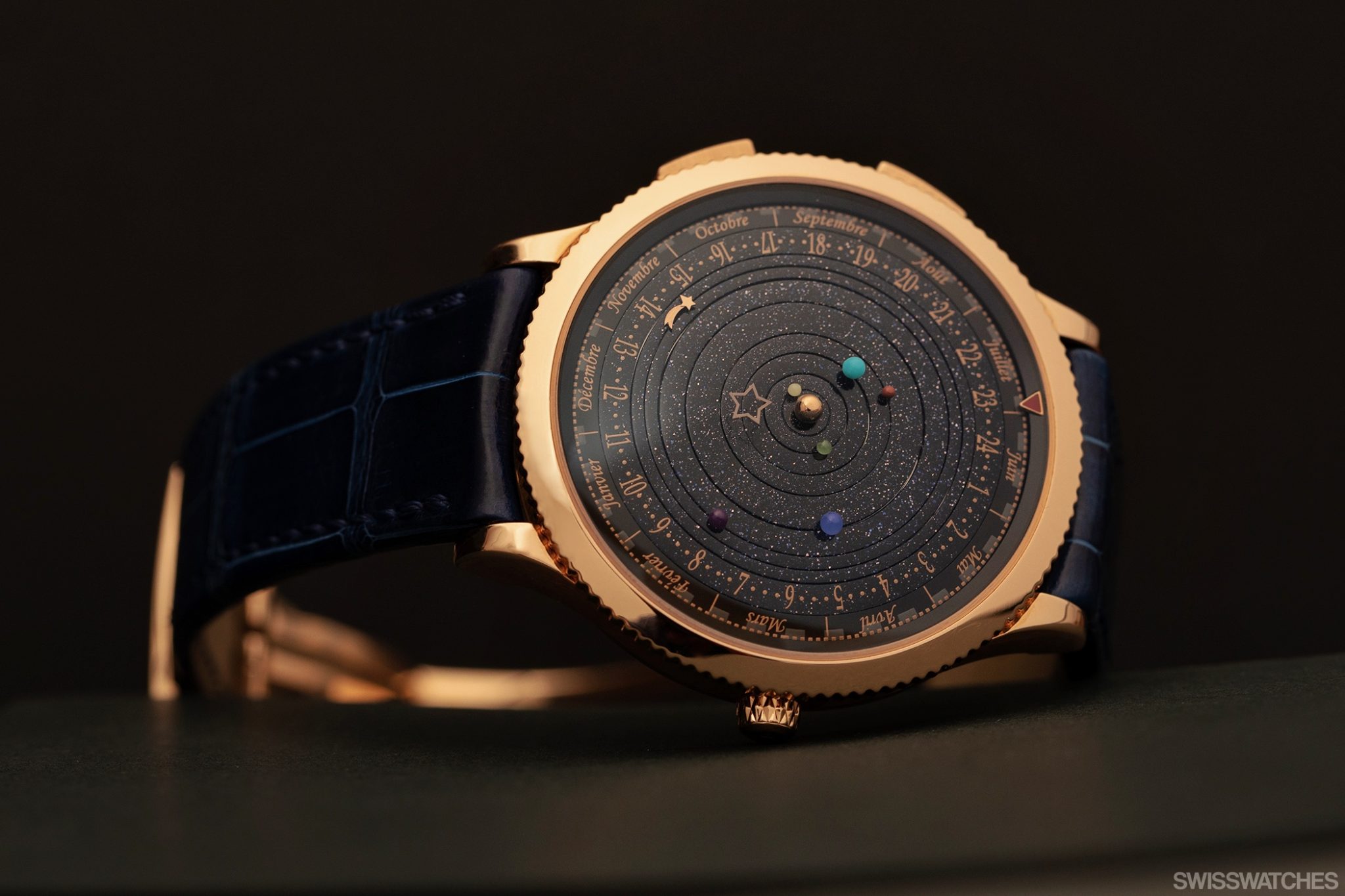
Finally, the question remains as to what sort of client might suit this watch. In addition to the fact that buyers must be prepared to pay €259,000 in 18-carat rose gold or €277,000 in 18-carat white gold, it is a watch for those wishing to pause for a brief moment to absorb the technical complexity of their timepiece while living in the outside world. I am not talking about those who use the astrological function of this watch to get their latest horoscope while flashing the timepiece at a party, but of those who use this watch to ponder upon the relationship between man, mechanics, and the cosmos.
